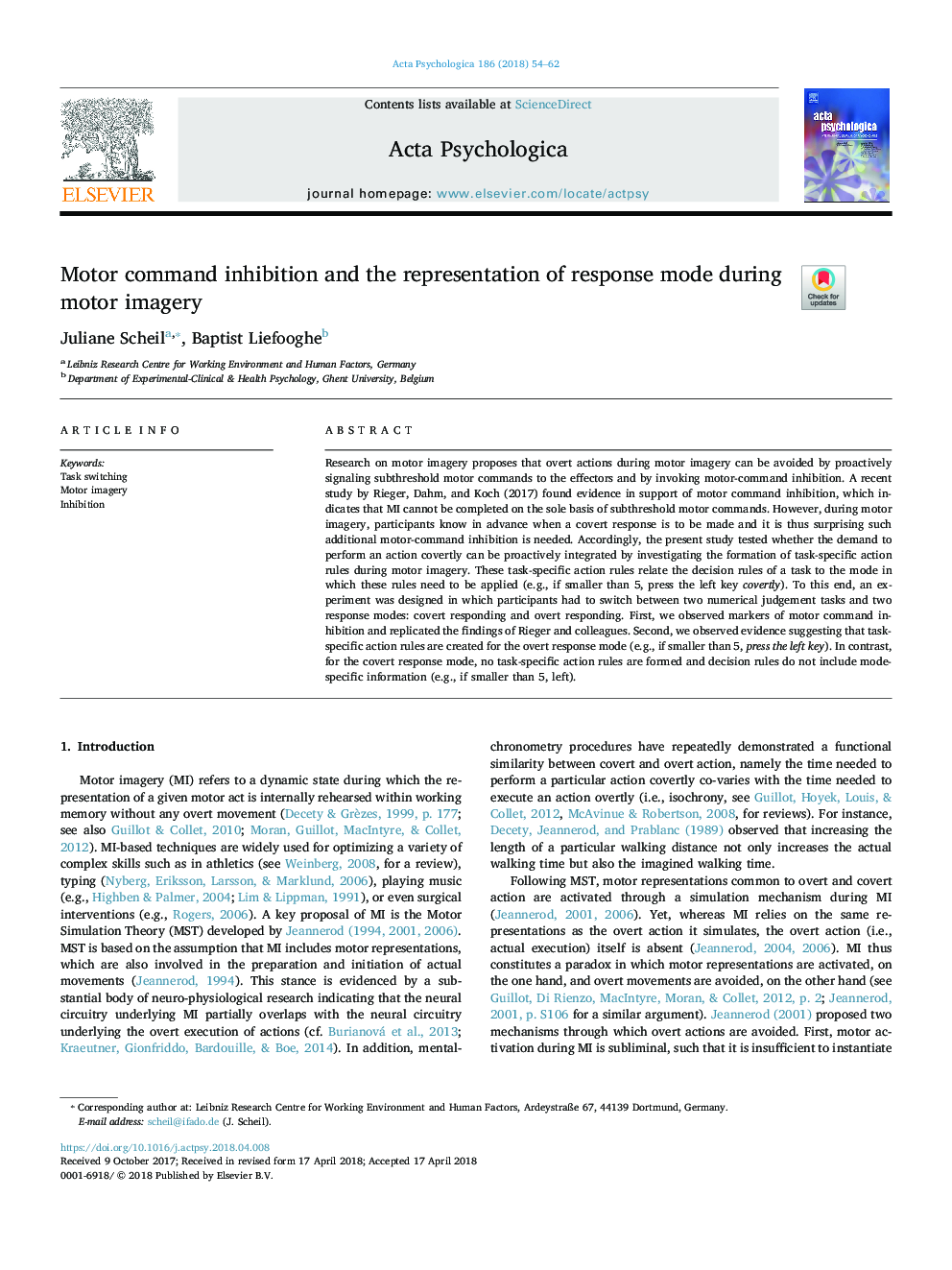| Article ID | Journal | Published Year | Pages | File Type |
|---|---|---|---|---|
| 7276686 | Acta Psychologica | 2018 | 9 Pages |
Abstract
Research on motor imagery proposes that overt actions during motor imagery can be avoided by proactively signaling subthreshold motor commands to the effectors and by invoking motor-command inhibition. A recent study by Rieger, Dahm, and Koch (2017) found evidence in support of motor command inhibition, which indicates that MI cannot be completed on the sole basis of subthreshold motor commands. However, during motor imagery, participants know in advance when a covert response is to be made and it is thus surprising such additional motor-command inhibition is needed. Accordingly, the present study tested whether the demand to perform an action covertly can be proactively integrated by investigating the formation of task-specific action rules during motor imagery. These task-specific action rules relate the decision rules of a task to the mode in which these rules need to be applied (e.g., if smaller than 5, press the left key covertly). To this end, an experiment was designed in which participants had to switch between two numerical judgement tasks and two response modes: covert responding and overt responding. First, we observed markers of motor command inhibition and replicated the findings of Rieger and colleagues. Second, we observed evidence suggesting that task-specific action rules are created for the overt response mode (e.g., if smaller than 5, press the left key). In contrast, for the covert response mode, no task-specific action rules are formed and decision rules do not include mode-specific information (e.g., if smaller than 5, left).
Related Topics
Life Sciences
Neuroscience
Cognitive Neuroscience
Authors
Juliane Scheil, Baptist Liefooghe,
